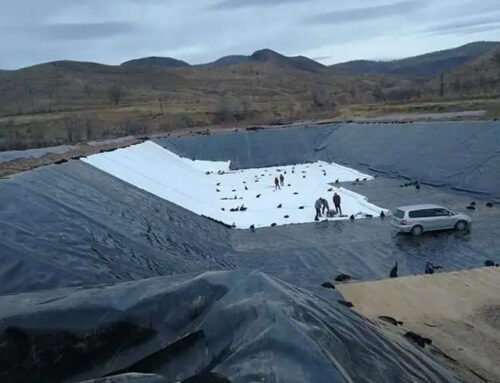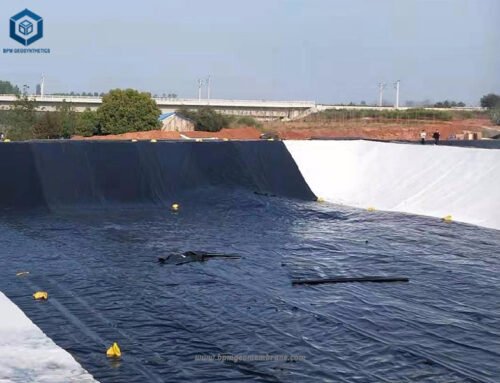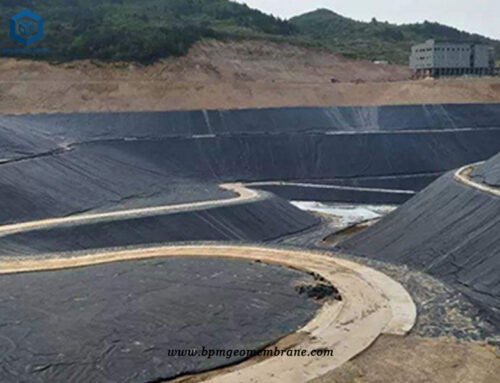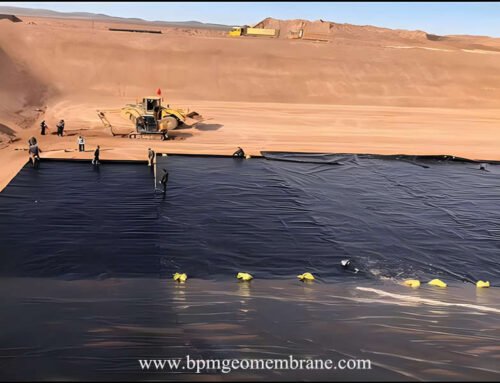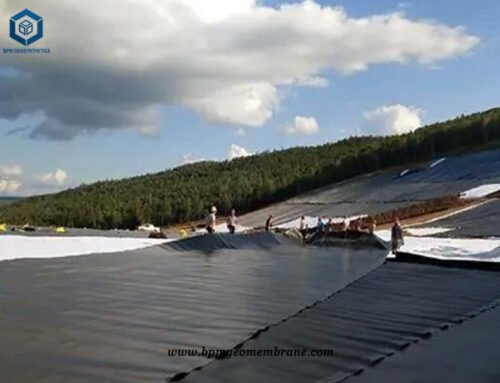PVC geomembrane liner is a kind of impermeable geomembrane liner, which is widely used in the modern municipal solid waste containment system.
1. What Is PVC Geoemembrane Liner?
PVC (Polyvinyl Chloride) geomembranes serve as flexible, impermeable barriers for environmental and construction projects. These synthetic liners effectively control fluid movement while preventing hazardous leaks in critical applications.
Key benefits include:
-
Environmental protection: Safeguards water quality and aquatic life by containing pollutants
-
Waste management: Securely isolates landfill contents from surrounding soil
-
Durability: Resists chemical degradation and UV exposure for long-term performance
-
Installation efficiency: Factory-fabricated panels reduce on-site welding
Proper installation requires surface preparation, expert seaming, and quality inspections. Engineers worldwide specify PVC geomembranes for reliable containment in water conservation, mining, and waste treatment projects.
2. Are PVC Geomembrane Liners Better Than HDPE?
PVC liners can’t handle sun and are usually glued. HDPE liners are better for hot places because they resist UV light and last long in the sun. They are welded for a strong, seamless cover. PVC is more flexible for special designs. Pick the right liner based on your project and area. For sun, HDPE is best.
2.1 Material Properties
PVC liners offer superior flexibility, allowing easy shaping around complex designs, while HDPE maintains rigidity for structural applications. Installers can chemically weld PVC seams, enabling precise custom fittings, whereas HDPE requires thermal fusion for bonding. HDPE outperforms in chemical resistance, making it ideal for industrial waste containment. PVC adapts better to temperature fluctuations without becoming brittle in cold conditions. Engineers select PVC for intricate projects and HDPE for demanding, large-scale containment systems.
2.2 UV Resistance
HDPE liners demonstrate superior UV stability compared to PVC alternatives, particularly in high-sunlight environments. While PVC liners gradually degrade under prolonged solar exposure, HDPE maintains structural integrity through advanced UV stabilizers. This critical difference makes HDPE the preferred choice for tropical climates and exposed installations. Engineers consistently specify HDPE for landfill caps, floating covers, and other sun-exposed applications where long-term performance is essential. The material’s inherent resistance to solar degradation ensures reliable containment for decades without significant material breakdown.
2.3 Installation Methods
PVC geomembranes install using chemical adhesives that create strong, flexible seams between panels. This bonding method allows for precise adjustments during installation, particularly useful for complex geometries. In contrast, HDPE liners require thermal fusion welding, where specialized equipment melts and fuses the material at molecular level.
The welded seams of HDPE liners achieve near-parent-material strength, making them ideal for critical containment applications. While PVC’s glued joints accommodate design flexibility, HDPE’s welded system provides unmatched seam integrity for long-term performance. Engineers select the appropriate method based on project requirements, with HDPE preferred for large-scale industrial applications needing maximum durability.
2.4 Application Considerations
Project requirements determine whether PVC or HDPE liners prove most suitable. PVC excels in decorative water features and small-scale containments due to its flexibility and ease of installation. HDPE dominates industrial applications like landfills and mining operations, offering superior chemical resistance and longevity.
Key selection factors include:
-
UV exposure: HDPE outperforms in high-sunlight environments
-
Chemical contact: HDPE resists harsh substances better
-
Project scale: PVC suits complex shapes, HDPE handles large areas
Consult engineers to evaluate site conditions, performance needs, and budget before choosing. Both materials deliver effective containment when properly specified.
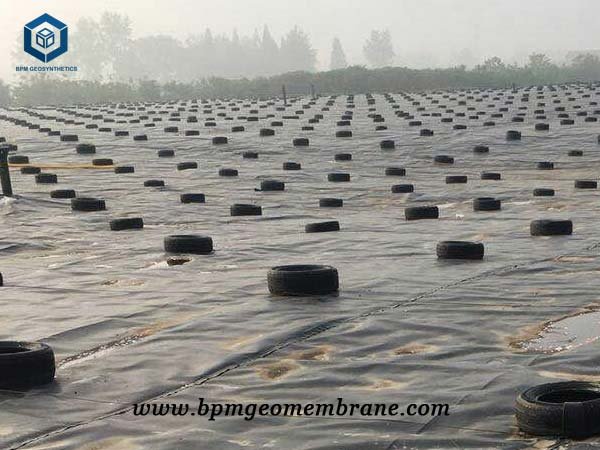
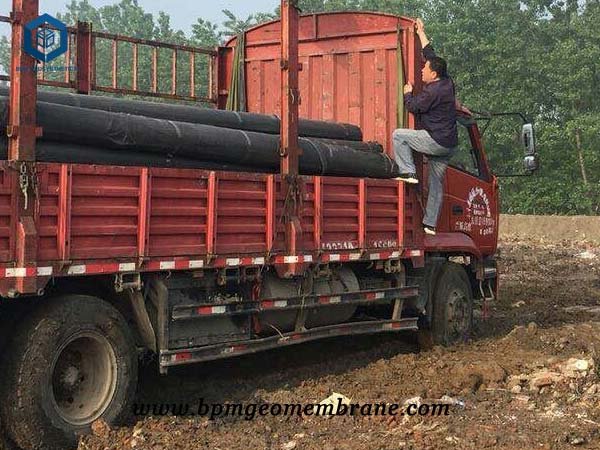
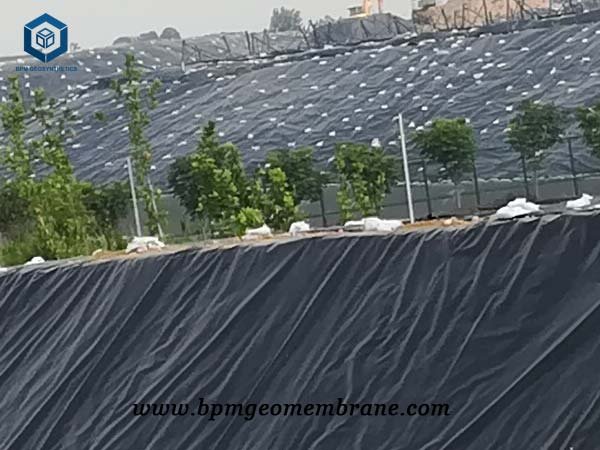
3. What Are PVC Geomembrane Liner Used For?
PVC liner is put in trash systems to stop leaks and save groundwater. BPM makes PVC liners with good chemical protection, UV shielding, strength, and wear resistance. It’s strong against industrial chemicals. Compared to concrete, asphalt, or clay, PVC liners are cheaper, eco-friendly, long-lasting, resistant, easy to set up, and transport.
PVC liners in landfills stop water getting in and gas building up. They can handle big changes and keep pollutants from water sources. They also save drinking water by blocking leaks.
In 2017, a customer from Bangladesh used our PVC liner for a waste project. They liked how we made the PVC membrane, its quality, and our low price. We sent a welding expert to help. They were happy with the lake liner quality and placed an order.
4. Specifications of PVC Geomembrane Liner for Waste Containment in Bangladesh
- Each roll size – 6m×50m
- Total quantity – 66,000 m2
- Construction period – one month
5. About BPM Geomembrane
BPM Geomembrane had provided many types of effective and state of the art geomembrane and geosythetics products to over 81 countries. We also providing professional design and installation service. OEM and ODM are also available. If you have any questions or inquiries, please contact us, we will reply as soon as possible.

